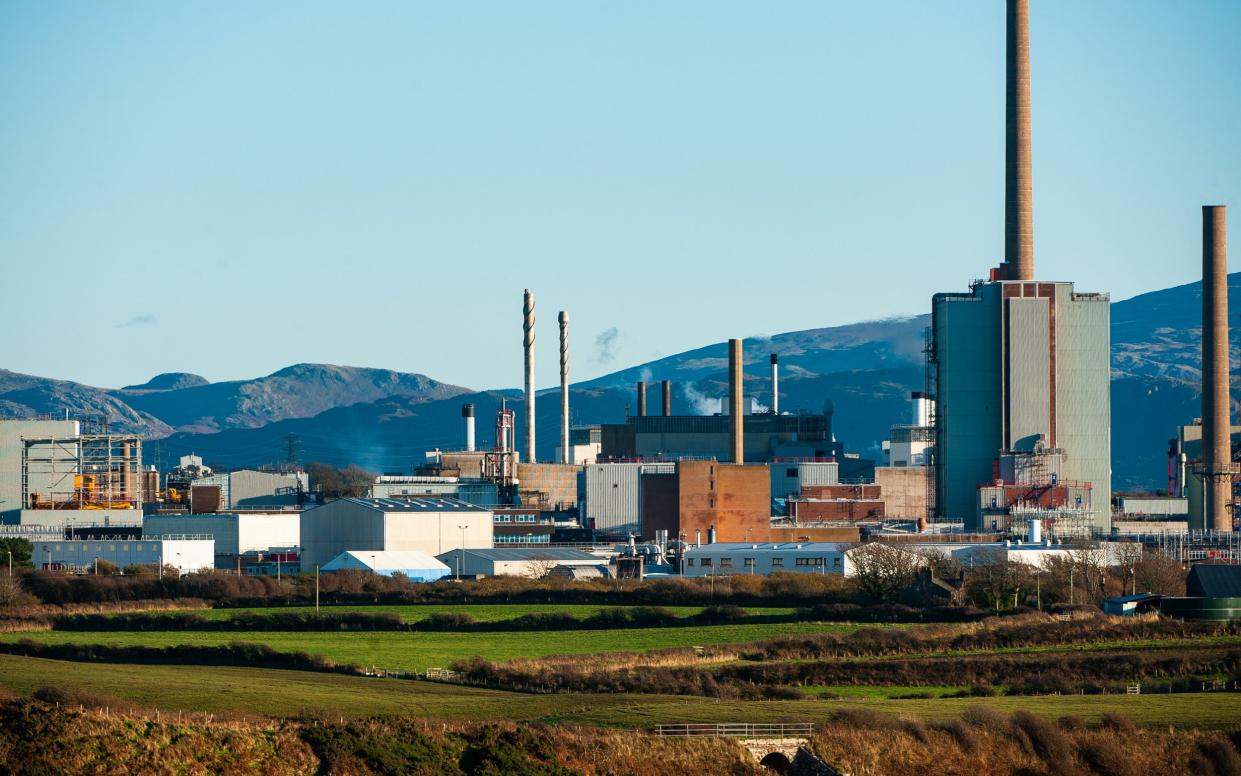Nuclear waste to be buried 650ft under the English countryside

Swathes of nuclear waste are set to be buried in the English countryside after ministers agreed to dig a 650ft pit starting this decade.
The facility, which has yet to be allocated a site, will hold some of the 5m tonnes of waste that was generated by nuclear power stations over the past seven decades.
This will ease pressure on the 17 nuclear waste disposal plants currently in operation around the country, which consist of giant sheds and cooling ponds.
The largest facility is the Sellafield site in Cumbria.
Plans for the 650ft pit will see it house so-called intermediate-level waste, possibly in a mine on a pre-existing nuclear site to minimise planning objections.
The facility will be separate from the much deeper geological disposal site that will hold the UK’s most dangerous waste, such as plutonium, which is unlikely to be built until after 2050.
The proposals come amid fears Britain’s stockpile of nuclear waste will grow in the coming decades with nowhere to put it.
Concerns are particularly acute as the Government is currently planning to build at least three new nuclear power stations.
This will put the country at odds with the 1976 review of nuclear waste policy by the Royal Commission on Environmental Pollution, which warned the UK was accumulating nuclear waste so fast that it should stop building reactors until it had a solution.
Ministers want to brand nuclear energy as a “green” and “sustainable” fuel.
However, experts on the Government’s own advisory body, the Committee on Radioactive Waste Management, have said such terms are misleading if there is no safe place to store radioactive waste.
Plans for a nuclear waste pit were recently published by the Department for Energy Security and Net Zero (Desnz), headed by Energy Secretary Claire Coutinho.
A government spokesman said: “In addition to long-term plans to dispose of the most hazardous radioactive waste in a geological disposal facility hundreds of metres underground, the Nuclear Decommissioning Authority will explore a facility closer to the surface for less hazardous radioactive waste.
“While a geological disposal facility is not expected to be ready until the 2050s, a shallower disposal facility – which is up to 200m below ground – could be available within 10 years.”
Nuclear waste can remain dangerous for tens of thousands of years, with fears of disposing of it underground stemming from the fact water can flow through waste, carrying radioactivity back to the surface.
However, once buried and sealed with cement, such waste will be practically impossible to reach should there be such a problem.
Nuclear accidents are rare but when they do happen the consequences can be deadly and extremely expensive.
This was evidenced by the disastrous fire at the Sellafield site in 1957, which released radioactivity across the UK and Europe.
Other accidents at Chernobyl, Ukraine, in 1986 and Fukushima, Japan, in 2011 were even more devastating.
The Government’s proposals come after policymakers recently announced the biggest expansion of nuclear power for 70 years.
Hinkley Point C is already under construction in Somerset at an estimated cost of £46bn, while Sizewell C in Suffolk is also about to start with a similar price tag.
A third giant nuclear station is also being planned alongside a fleet of so-called small modular reactors.
Andrew Bowie, the minister for nuclear energy, said: “We’re taking sensible steps to manage our radioactive waste, while reducing the burden on the environment and taxpayer.”
David Peattie, chief executive officer at the Nuclear Decommissioning Authority, added: “We will maintain the highest standards of safety and environmental protection to deliver our nationally important decommissioning mission.”
As for the much larger geological disposal facility, which will hold the UK’s deadliest waste, this will soon become Britain’s biggest and most expensive infrastructure project ever.
Two sites are under consideration for the facility, which is expected to be 3,500ft deep.
One lies off the coast of Lincolnshire and the other is off the coast of Cumbria around Copeland.

